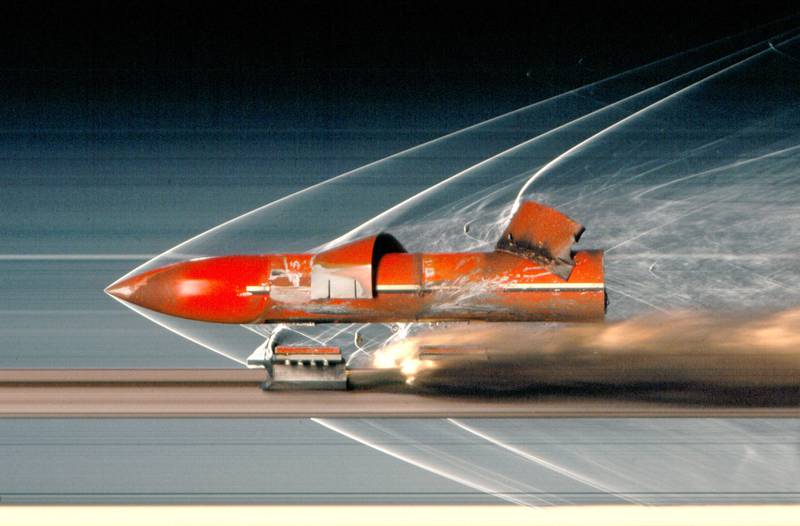A key motivation driving the development of hypersonic weapons, which glide through the atmosphere at more than five times the speed of sound, is the desire to counter missile defenses. Evading terminal defense interceptors would allow these weapons to destroy missile- and air-defenses early in a conventional conflict, opening routes of attack for other weapons. It would also allow hypersonic weapons to pose a serious threat to ships.
A recent article, citing defense officials, warns that “Even the most advanced US warship in the South China Sea could be defenseless against a hypersonic attack.” In contrast, a March Pentagon press statement says that “Aegis ships equipped with the sea-based terminal [defense] capability can now engage some hypersonic threats.”
RELATED

What’s the reality? With prospects of a hypersonic revolution pushing U.S. spending and strategy, it is important to understand what hypersonic weapons can and can’t do.
Our recent analysis of hypersonic weapons and hypersonic defense looks at the physics of missile interception and shows that in contrast to common claims, hypersonic weapons can be intercepted by existing terminal defenses.
The hypersonic weapons currently being developed by the US, Russia, and China for conventional uses have maximum speeds below about Mach 10-12. We show that the atmospheric drag on these weapons as they glide and dive to targets on the ground will slow them enough that they can be intercepted by defenses like advanced versions of the Army’s Patriot PAC-3 and the Navy’s Aegis SM-6.
This vulnerability was illustrated when Ukraine used PAC-3 to shoot down multiple incoming Russian Kinzhal missiles, despite their maneuvering flight at hypersonic speeds.
This means that ships are less vulnerable to hypersonic attack than is frequently claimed. Ship-based radars could detect approaching hypersonic weapons at distances of many hundreds of kilometers, which is more than adequate to fire interceptors at them. Ships with interceptors similar to advanced PAC-3 and SM-6 systems should therefore be able to defend themselves from the hypersonic weapons currently being developed.
This finding is supported by a Missile Defense Agency animation showing a carrier group using ship-based interceptors against hypersonic weapons. The video shows a ship-based interceptor like SM-6 engaging hypersonic weapons detected by the ship’s radar.
Developing faster hypersonic weapons could help a country evade current interceptors, but would raise new problems. Faster flight through the atmosphere would lead to much more intense heating of the vehicles, which remains the fundamental challenge in designing these weapons.
And at the same time, countries will be working to develop increasingly fast and maneuverable interceptors to engage the next generation of hypersonic weapons their adversaries might develop.
Our analysis also shows that hypersonic weapons’ ability to maneuver during their glide phase—around defended regions, for instance—is typically exaggerated and comes at a significant cost.
The very high speeds of these weapons means they require very large aerodynamic forces to turn. Generating these forces increases drag and can significantly reduce the speed and range of the weapon.
As an example, consider a Mach 10 weapon that turns by 30o to avoid overflying a particular location and then turns back by 30o to its original direction of flight. Under reasonable assumptions, the drag during this turn would reduce its speed from Mach 10 to about Mach 6 and reduce its total glide distance to less than 60% of the distance it could have flown with no turns.
Adding an engine, like a scramjet, could reduce the loss of speed and range during maneuvers, but adding an engine and fuel would increase the weapon’s size and mass, requiring a significantly bigger booster to launch it. Since scramjets are not a mature technology and operating them is notoriously complicated, powered hypersonic systems will likely be less reliable and more expensive than boost-glide weapons.
Ballistic missiles also fly at hypersonic speeds, and flying them on depressed trajectories can deliver missiles in equal or shorter times than hypersonic weapons, without the heating problems. Ballistic missiles delivering warheads that can maneuver in the atmosphere (using maneuverable reentry vehicles, or MaRVs) can use similar guidance technologies and have similar accuracy as hypersonic weapons. MaRVs can also use lift as they reenter the atmosphere to maneuver and re-target over hundreds of kilometers.
In general, MaRVs launched by ballistic missiles on depressed trajectories out-perform hypersonic weapons in many scenarios. A recent analysis by the Congressional Budget Office predicts they would be a third less expensive than hypersonic weapons.
The hypersonic arms race is likely to increase tensions and military spending internationally without enhancing national or global security. Hypersonic weapons do not live up to many of the grandiose claims about their performance, and there are better options for gaining the capabilities they do offer. The United States needs to take a more realistic view of these weapons and the billions of dollars it is spending on them.
David Wright is a visiting scholar in the Laboratory for Nuclear Security and Policy in the Department of Nuclear Science and Engineering at the Massachusetts Institute of Technology. He has a PhD in Physics.
Cameron Tracy is a research scholar in the Center for International Security and Cooperation, Freeman Spogli Institute for International Studies at Stanford University. He has a PhD in Materials Science and Engineering.








